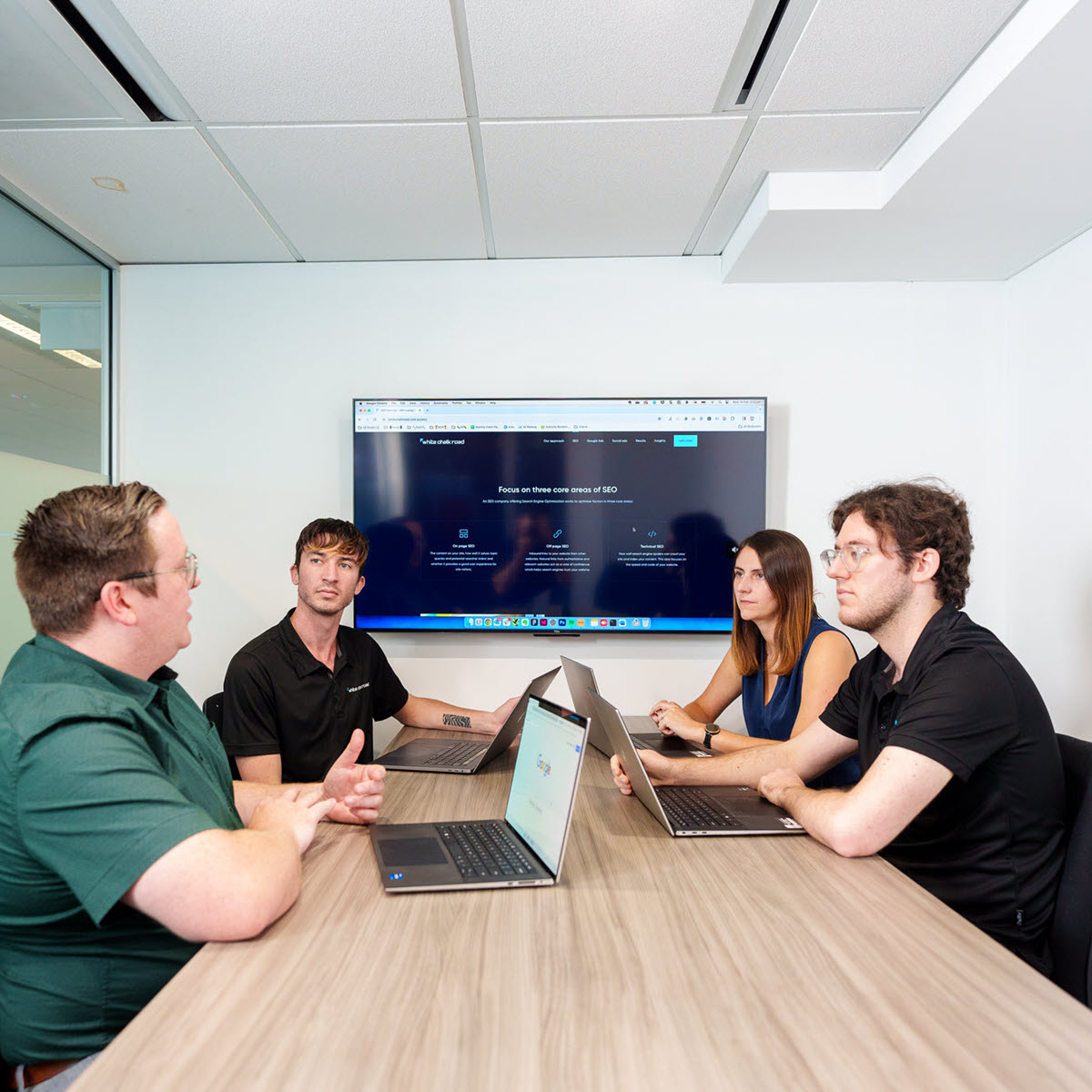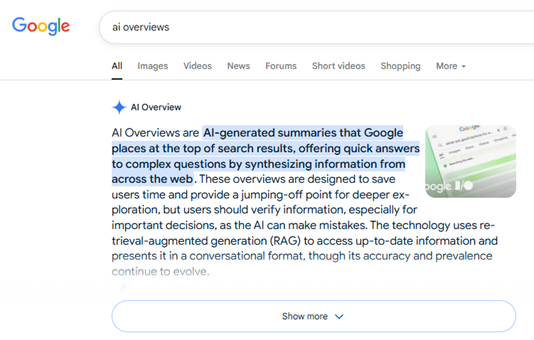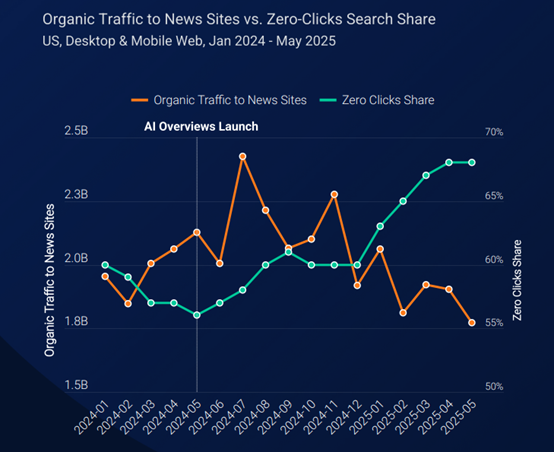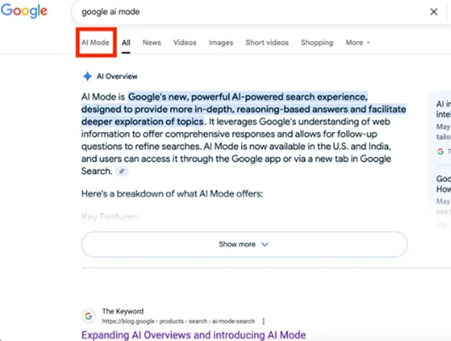
Google has defined how we source and consume information online for over 27 years. The once simplistic Google algorithm is now a complex beast designed to help billions of people find the information they need, by ‘Googling it’.
Now, AI is reshaping the search landscape. To stay relevant in the fight for your attention, Google has introduced AI Mode. So what does this mean for the future of websites, SEO, and digital marketing in Australia?
What’s changing in Google Search?
Billions of people use Google daily to:
- Find answers to questions
- Keep up with news
- Buy products and services
- Find directions or recommendations
Traditionally, Google’s algorithm has aimed to deliver the most relevant and trustworthy website pages for a user’s query. Ranking is based on a blend of technical, on-page, and off-page factors that form the foundation of search engine optimisation (SEO).
With the rise of generative AI tools like ChatGPT, Gemini, Perplexity and Claude, people are searching differently. These tools allow detailed, conversational queries and return direct answers, rather than a list of websites.
AI Overviews
AI Overviews are already displaying in most Australian search results. These are short AI-generated summaries at the top of results, which have already seen a decrease in click-throughs to websites, as many users are getting the answers they need from the summary.
 This is because, instead of clicking through to a site, users are increasingly consuming information directly within the search results. This shift has accelerated the move towards zero click searches, reshaping the way users interact with Google Search.
This is because, instead of clicking through to a site, users are increasingly consuming information directly within the search results. This shift has accelerated the move towards zero click searches, reshaping the way users interact with Google Search.
What is AI Mode?
Google has evolved its search experience with a new dedicated feature called AI Mode. It’s already rolled out across the world and is expected to hit Australia in September 2025.
Unlike the current AI Overviews, AI Mode provides long-form, conversational answers. It uses Google’s Gemini AI to:
- Read, interpret, and summarise information from across the web
- Deliver detailed responses directly in the search results
- Allow follow-up questions, just like ChatGPT and other current AI tools
You access AI Mode via its own tab, alongside “Images”, “Maps”, and “Videos”. The experience is designed to feel less like browsing a search engine and more like chatting with an AI assistant.
The key difference is that you’re less likely to leave Google and click through to a website. Instead, you stay within the Google search environment.
What we know from the rollouts overseas
Following the rollout of AI Mode in the US and UK, the data suggests the impact is exciting and significant.
- Impressions increasing: If your page appears in Google’s AI response, it counts as an impression.
- Website traffic is falling: Many publishers, especially news sites, have reported drops of up to 40% in visits.
- User behaviour is changing: People are spending more time inside Google’s results instead of navigating away.
- Winners and losers are emerging: Brands with strong authority may still be surfaced in answers, while smaller, less authoritative sites are more likely to miss out on visibility.
We know that AI-generated summaries rely on sources that Google deems trustworthy, accurate, and relevant. So topical authority in your content is more important than ever.
Topical authority is how much Google trusts your website’s information. It’s earned when your content demonstrates deep knowledge, relevance, and helpfulness across a particular topic – and to rank in AI Mode, you need to show Google you are the authority in your industry. You do this by creating consistent, relevant content on your chosen industry.
Impressions are trending up, while traffic is declining – and a lot of the data, such as AI Mode clicks, impressions, and positions, can now be tracked in Google Search Console.
According to Similarweb, of the top 50 US news domains, 37 experienced year-on-year traffic declines after the launch of AI Overviews. AI Mode is likely to amplify this effect.

Source: Similarweb
Businesses with strong brands and good websites, optimised for SEO and GEO are the big winners, allowing AI to source information and deliver to their target audience.
Is AI Mode optional?
For now, yes. Users need to actively select ‘AI Mode’ when using Google Search.

But even if you don’t use AI Mode, you’ll still see AI Overviews at the top of most searches. Given how popular these results are proving, it feels unlikely that AI Mode will remain optional in the long term.
How do you appear in AI Search results?
The million-dollar question: how can your business still be found?
Optimising for AI Mode isn’t radically different from traditional SEO, with a few new nuances.
Best practices so far include:
- Fast site speed: AI crawlers move quickly. If your page takes too long to load, it may be skipped.
- Strong internal linking: Helps AI tools connect and understand your site’s structure.
- EEAT principles (Experience, Expertise, Authority, Trust): Reinforce credibility through clear, well-structured, authoritative content.
- Structured metadata: Use schema.org markup, descriptive titles, and accurate dates to help AI interpret your content.
- Accessible formats: Clean HTML, clear headings, and readable layouts make your content easier to extract.
Think of it this way: if a human and an AI bot both land on your site, it should be fast, clear, and credible enough to serve both.
How does AI Mode effect SEO?
In short: expect less traffic, more impressions, and consistent leads.
AI Mode may reduce the number of casual visitors who click through to your site. But your core audience, your customers, are still ready to buy your product or service. They may start their journey with AI answers, but will still need products, services, and trusted providers.
Your role (and White Chalk Road’s purpose as a marketing agency) is to ensure your brand remains visible, authoritative, and trusted in whatever format Google delivers.
Reporting in an AI Search world
AI Mode also changes how we measure client success.
Currently, tools like Google Analytics and Tag Manager track user interactions on your site. But if users get their answers in AI Mode without clicking through, these interactions go unrecorded.
This means marketers will need new reporting methods, such as:
- AI listening tools to track mentions of your brand in AI-generated results.
- Brand visibility reports that measure presence within AI answers rather than just traffic.
- Integrated CRM to help you track all of your important customer data.
- Adjusted KPIs that focus on conversions, impressions and brand awareness, not just site visits.
The SEO industry is already exploring new metrics to reflect this shift, and we are actively working with our clients to adapt and implement the best solutions.
What should Perth businesses be doing now?
AI Mode is still evolving, but Australian businesses should prepare now.
Key actions:
- Audit your site speed and technical SEO.
- Refresh your content with clarity and authority in mind (EEAT).
- Implement structured data and schema where possible.
- Create an llms.txt file to direct AI to the right content on your site.
- Keep monitoring how AI Mode impacts your traffic and leads.
The fundamentals of SEO (quality, relevance and trust) remain the same, with a few updated GEO nuances. But the way results are delivered is changing, and adaptation is key.
Search is evolving, we are too
AI Mode marks one of the biggest shifts in Google Search since its creation. For businesses, marketers, and SEOs in Australia, it means rethinking how visibility is measured and how content is created.
Traffic numbers may drop, but the need for trustworthy, well-optimised websites remains. Your brand still needs a strong online presence, only now, success may be measured less by clicks and more by visibility within AI-powered results.
Here at White Chalk Road, we are creating GEO strategies to evolve with Google Search and AI. Speak to our expert team to find out how we can help you go further online.




